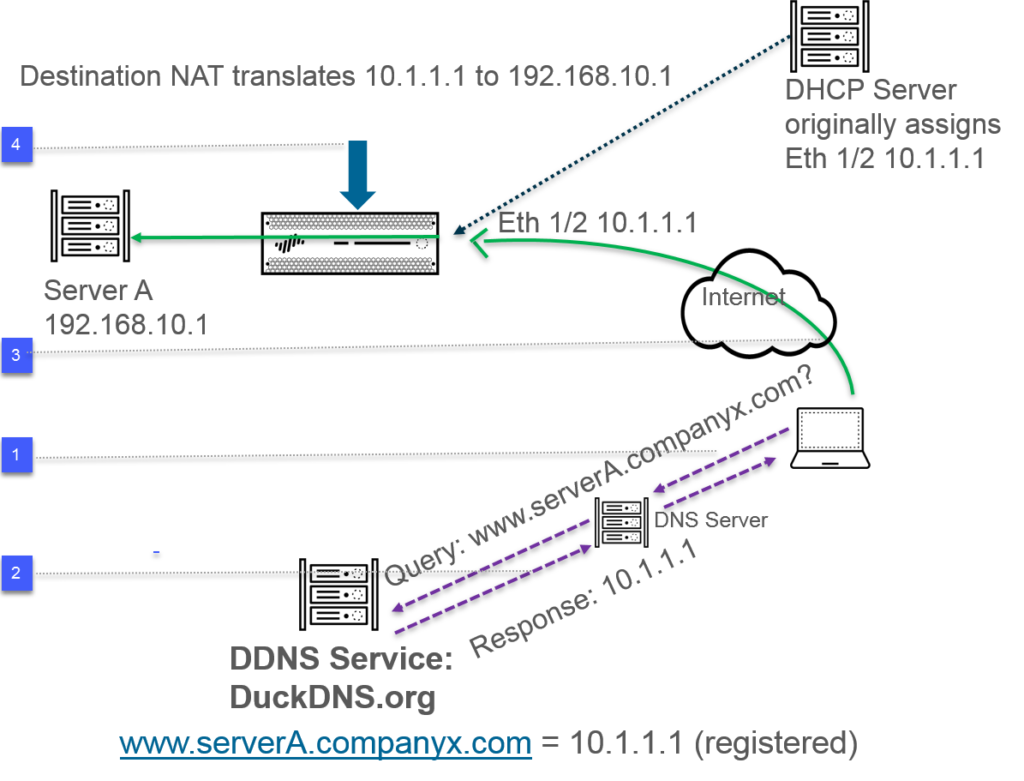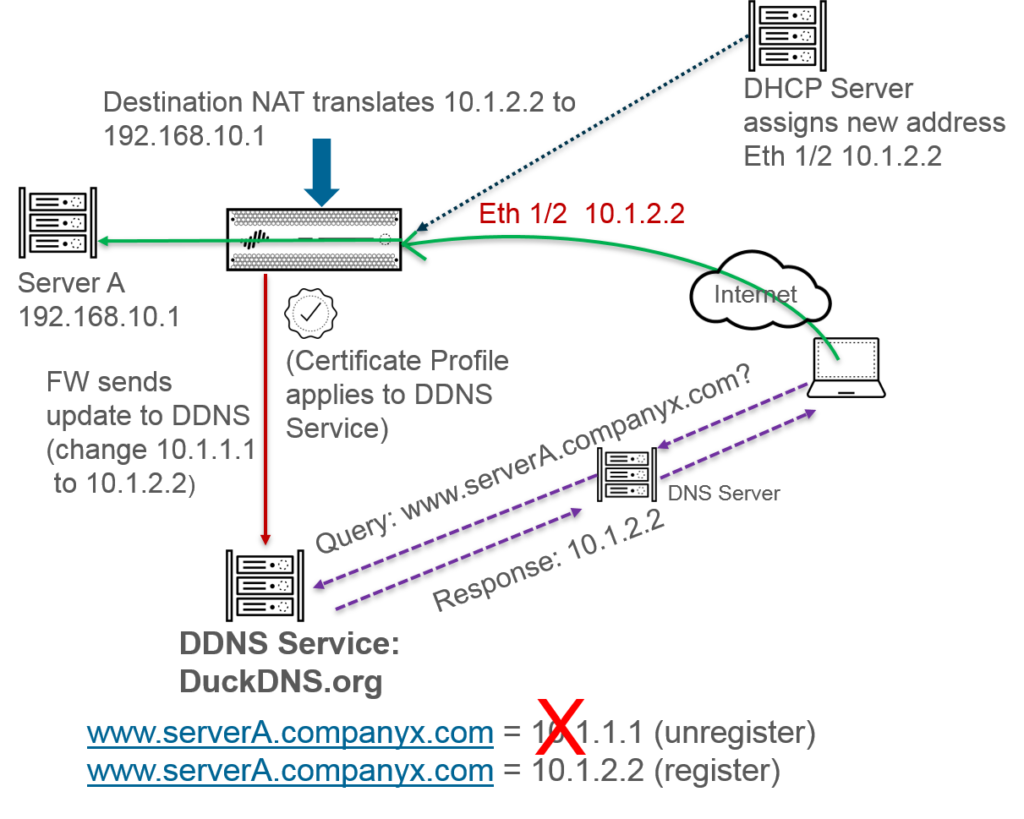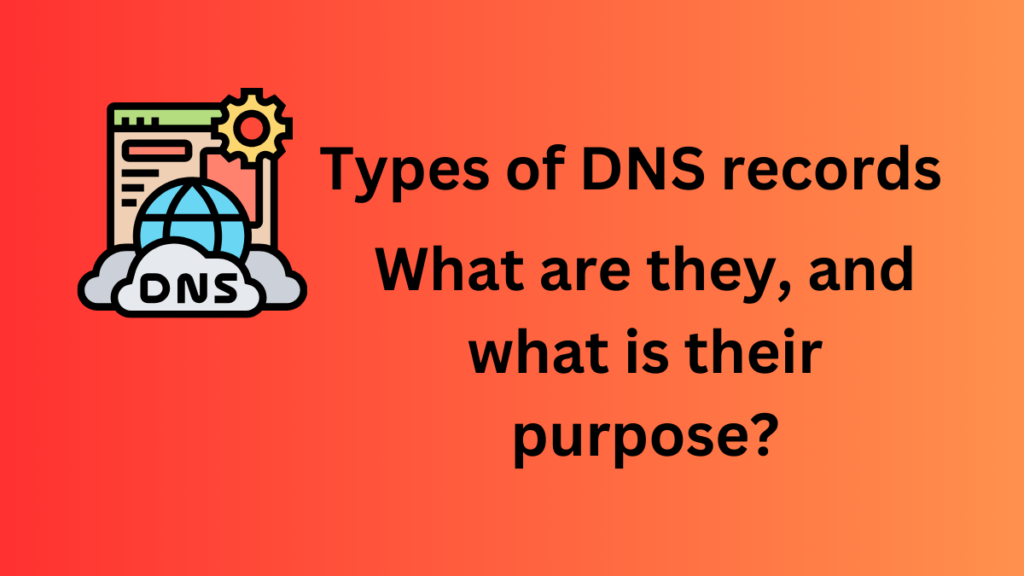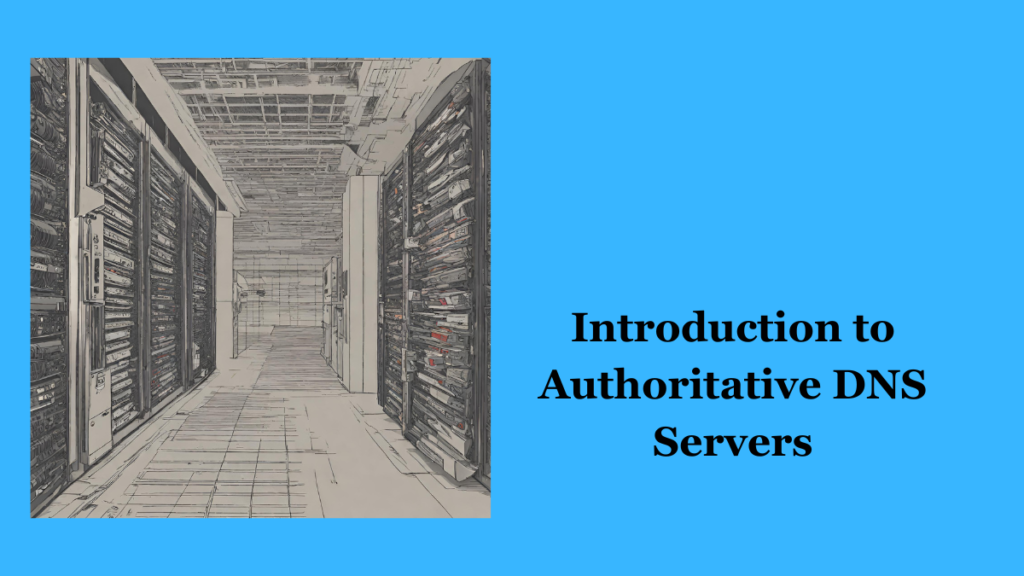
Dynamic DNS, commonly called DDNS, is an automated system that updates DNS records without manual intervention, crucial for maintaining accurate A (IPv4) and AAAA (IPv6) records when a host’s IP address changes. Consider a scenario where you operate a server in your office to provide services to employees. Still, you rely on a standard consumer-grade internet connection from a typical Internet Service Provider (ISP). This setup assigns a temporary, dynamic IP address that may change whenever you reconnect or periodically over time. You face three choices to manage this:
- Opting for a costly static IP address.
- Manually updating the DNS record every time the IP changes.
- Utilizing DDNS to automate IP address updates.
DDNS services are particularly useful because they periodically and automatically update your DNS’s A or AAAA records in response to changes made by your ISP. This automation means you don’t have to worry about your IP address changes affecting accessibility.

How DDNS Works
DDNS operates by monitoring your IP address for any changes. When a change is detected—common with dynamic IP addresses—the DDNS service updates your DNS records with the new IP address. For example, suppose you have a server offering a service accessible via the internet. In that case, it might be connected to an internal network and communicate externally through a Network Address Translation (NAT) router. The NAT router assigns internal IP addresses via DHCP and facilitates external access through port forwarding, exposing your service via an external IP and port. Should this external IP change, a DDNS service updates the DNS record with the new IP automatically after you register the server under a constant hostname within the DDNS provider’s settings.
Why DDNS is Beneficial
DDNS is invaluable for anyone needing reliable internet accessibility for their home-hosted websites, CCTV cameras, VPNs, or gaming servers. It is a cost-effective alternative to static IP addresses and eliminates the manual hassle of updating DNS records upon each IP change. Here’s a quick comparison:
| Feature | Dynamic DNS (DDNS) | Static IP Address |
|---|---|---|
| Nature | Changes periodically | Remains constant |
| Setup | Requires service & software setup | Assigned and setup by ISP |
| Cost | Often less expensive, free options | Typically more expensive |
| Maintenance | Automatic updates with IP changes | Manual updates needed |
| Use Cases | Home servers, VPNs, CCTV cameras | Large businesses, dedicated hosting |
| Ease of Access | Continual, despite IP changes | Always accessible via the same IP |
| Security | Secure with timely updates | Generally more secure due to consistency |
| Flexibility | Suited for dynamic environments | Best for stable IP needs |

Benefits of DDNS
- Accessibility: Continues to provide access to your services or website despite IP changes.
- Practicality: Eliminates the need for network administrative intervention for regular DNS updates.
- Economic: Reduces costs related to IP management and prevents IP conflicts when multiple addresses are in use simultaneously.
Setting Up DDNS
Implementing DDNS is straightforward. Most providers, like ClouDNS, offer free DDNS services with their plans, including entirely free options. Register for a free account, configure your device or server with the client software, and begin using DDNS. Specific configurations vary based on your operating system, and many providers offer detailed guides and tutorials for setup.
Challenges
Without DDNS, any change in your external IP can cause downtime or render your server inaccessible, potentially disrupting business operations. Manual updates are not only cumbersome but prone to errors and oversights, highlighting the utility of DDNS in ensuring smooth and continuous internet services.
The primary alternative to using Dynamic DNS (DDNS) is to obtain a static IP address. Here’s a breakdown of this alternative and how it compares to using DDNS:
Static IP Address
Definition: A static IP address is a constant, fixed IP address assigned to a device. Unlike dynamic IP addresses, which can change each time a device reconnects to the internet, a static IP remains the same indefinitely.
Advantages:
- Reliability: A static IP does not change, which makes it ideal for hosting servers, websites, or services that require consistent access. Users and clients can always connect to the same IP address.
- Ease of Setup for Services: Services like VPNs, remote desktop applications, and server hosting benefit from a static IP because it simplifies the setup and maintenance of network configurations.
- Required for Certain Applications: Some advanced network services and configurations, such as certain types of VPN or server setups that need a consistent endpoint, require a static IP address to function correctly.
Disadvantages:
- Cost: Static IP addresses typically come at an additional cost from Internet Service Providers (ISPs). This can be significantly higher than the dynamic IP addresses that come standard with most internet plans.
- Scalability Issues: Obtaining and managing static IP addresses can be cumbersome and expensive for large deployments or systems with many devices requiring internet access.
- Security Concerns: Static IPs can pose a higher security risk since the IP address is always the same, making it easier for potential attackers to target specific devices consistently.
Comparison with DDNS
While both static IP addresses and DDNS provide solutions for accessing devices with a fixed endpoint, they serve different needs and use cases:
- Cost-effectiveness: DDNS is generally more cost-effective, especially for home users or small businesses, as many DDNS services are available at low cost or even free. In contrast, static IPs typically incur an ongoing additional fee.
- Flexibility: DDNS offers more flexibility for users with dynamic IP addresses provided by their ISP, adapting to changes without requiring manual intervention. Static IPs are less flexible but provide a stable, unchanging network address.
- Ease of Use: Setting up DDNS can be slightly more complex than using a static IP, as it involves configuring DDNS software or hardware to track and update IP changes. Static IPs are straightforward to set up initially—once assigned, no further configuration is needed to handle IP changes.
- Security: Both methods have their security implications. DDNS can be secure but depends on the timely updating of DNS records. Static IPs, while consistently reachable, can be more susceptible to targeted attacks unless adequately secured.
The choice between DDNS and a static IP address depends on your needs, budget, and technical setup. Static IPs are preferable for those requiring a permanent and unchanging internet presence, while DDNS is suited for dynamic environments where IP addresses frequently change.
Protecting Dynamic DNS (DDNS) involves implementing security measures to safeguard against common threats such as unauthorized access, DNS hijacking, and spoofing. Here are several strategies to enhance the security of a DDNS setup:
1. Use Strong Authentication
- Secure Credentials: Ensure that the credentials used for your DDNS account are strong and involve a mix of letters, numbers, and symbols. Avoid using default or easily guessed passwords.
- Two-Factor Authentication (2FA): If your DDNS provider supports it, enable two-factor authentication. This adds an extra layer of security by requiring a second form of verification (e.g., a code sent to your phone) and your password.
2. Regularly Update and Patch
- Client Software Updates: Keep any DDNS client software up to date. Software updates often include patches for security vulnerabilities that could be exploited by attackers.
- Router and Device Security: Ensure that your network devices, especially routers and any device that runs DDNS client software, are regularly updated with the latest firmware and security patches.
3. Secure Network Configuration
- Firewall Rules: Configure your firewall to restrict inbound and outbound traffic to only necessary services and ports. This helps prevent malicious access attempts to your network devices.
- Port Forwarding: Be cautious with port forwarding; only open the ports necessary for your application and close them when not in use. This reduces the attack surface available to potential intruders.
4. Use Secure DNS Practices
- DNSSEC: Use DNSSEC (DNS Security Extensions) if supported by your DDNS provider. DNSSEC helps protect against DNS threats such as cache poisoning by validating the authenticity of the DNS responses.
- Encrypted DNS: Consider using DNS over HTTPS (DoH) or DNS over TLS (DoT) to encrypt DNS query traffic, which prevents eavesdropping and man-in-the-middle attacks.
5. Monitor and Log Activity
- Regular Monitoring: Monitor the logs for your DDNS account and associated devices for any unusual activity. This can include unexpected IP updates or login attempts.
- Alerts and Notifications: Set up alerts if your DDNS provider offers this feature. Notifications for changes in DNS settings or account logins can help you react quickly to unauthorized changes.
6. Choose a Reputable DDNS Provider
- Provider Security Features: Select a DDNS provider that prioritizes security. Look for features like robust authentication, encryption options, regular auditing, and a good track record in handling security.
- Privacy Policy: Review the provider’s privacy policy to understand how your data is handled and protected.
7. Secure Endpoint Security
- Antivirus and Anti-malware: Ensure that all devices using DDNS are protected with up-to-date antivirus and anti-malware solutions to prevent compromise from local threats.
- Secure Configuration: Ensure that all system configurations are secure, following best practices to minimize vulnerabilities.
By implementing these practices, you can significantly enhance the security of your DDNS setup, protecting it from common threats and ensuring that your network remains safe and accessible even with dynamic IP addresses.
Dynamic DNS (DDNS) is widely used across various scenarios to maintain a constant and accessible online presence for devices or services with changing IP addresses. Here are two detailed case uses that illustrate the utility and application of DDNS:
1. Home Surveillance System
Scenario: A homeowner wants to set up a surveillance system with several IP cameras around their property. They aim to access these cameras remotely to monitor their home while at work or traveling. The homeowner’s internet service includes a dynamic IP address, which changes periodically.
Implementation:
- The homeowner registers for a DDNS service, which provides a stable hostname linked to their fluctuating IP address.
- Each camera is connected to the home network, and the network router is configured to allow secure remote access to the cameras. This might involve setting up port forwarding for the specific ports used by the IP cameras.
- The DDNS client software is installed on the router or a network-connected device, which automatically updates the DDNS service with the home’s current IP address whenever it changes.
Benefits:
- Remote Accessibility: The homeowner can access the live feeds from their cameras using the DDNS hostname from anywhere, without needing to know the current IP address.
- Cost-Effective: Using DDNS is more economical than purchasing a static IP address from the ISP.
- Ease of Setup and Maintenance: Once set up, the system requires minimal maintenance, as the DDNS service keeps the hostname updated with the current IP address.
2. Remote Access to a Development Server
Scenario: A software developer wants to host a development server in their home that they can access from their office or while traveling. The server hosts developmental builds and testing environments for new software. The developer’s ISP assigns a dynamic IP address, complicating consistent remote access.
Implementation:
- The developer sets up a DDNS service, assigning a hostname that remains constant even as the IP address changes.
- Necessary security measures are implemented, including configuring the server’s firewall to limit access to certain ports and setting up VPN access for secure connections.
- DDNS client software is configured on the server or a connected router to automatically update the DDNS service with the new IP address whenever it changes.
Benefits:
- Continuous Access: The developer maintains continuous access to the development server using the DDNS hostname, irrespective of the changing IP.
- Secure Connection: Implementing a VPN in conjunction with DDNS provides a secure connection over the internet, protecting sensitive data and development files.
- Flexibility: The developer can seamlessly continue working from different locations without interruption or the need for manual configuration adjustments.
These case uses demonstrate how DDNS serves as a practical and efficient solution for maintaining remote access to devices or services, especially in dynamic IP environments, ensuring both convenience and security.

Tech Enthusiast & Knowledge Sharer
I am a passionate technologist dedicated to demystifying the world of networking, cloud computing, and automation. Focusing on simplicity and practicality.
I believe in breaking down complex concepts into understandable and actionable insights.




